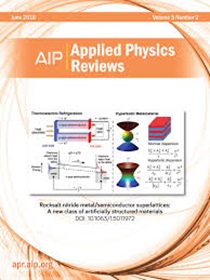氮化镓在电动汽车发展中的作用:能源应用、技术和挑战
IF 11.9
1区 物理与天体物理
Q1 PHYSICS, APPLIED
引用次数: 0
摘要
直到最近,电动汽车(EV)才发展成为当代发明。为了减少对石油的依赖和对环境的污染,一些国家迅速加快了电动汽车的发展。在有形世界中,与其他传统汽车不同,全电动汽车的尾气排放不释放任何二氧化碳(CO2)。因此,每年可减少 50%-70% 的二氧化碳空气污染。由于不再需要内燃机,交通实现电气化后,车辆的重量和体积都有所减小。碳化硅(SiC)和氮化镓(GaN)等宽带隙材料为电动汽车的制造提供了优势。从 2000 年代末开始,电动汽车行业已开始在其制造工艺中采用氮化镓器件。半导体材料氮化镓具有开关频率高、温度极限高和击穿电压高的特点,是电动汽车电力电子系统的理想材料。本综述旨在全面概述电动汽车应用中的半导体 GaN 材料,为研究人员和科学家提供有用的见解,以加快他们的创新,改进电动汽车。本综述首先介绍了电动汽车,然后介绍了电动汽车的预期需求。与传统的硅和碳化硅器件相比,氮化镓器件是目前电动汽车的主要功率器件,本文将讨论氮化镓器件在电动汽车中的应用。此外,还讨论了 GaN 器件的最新进展,这些器件可用于全自动电动汽车的各种组件,如电池、储能系统、辅助动力装置和电机驱动,还可用于不同的非汽车车辆,如电动飞机、电动船舶、电动铁路、电动潜艇和重型车辆。最后,还讨论了氮化镓器件面临的挑战以及克服这些缺点的潜在解决方案。本文章由计算机程序翻译,如有差异,请以英文原文为准。
The role of gallium nitride in the evolution of electric vehicles: Energy applications, technology, and challenges
It is only recently that the electric vehicle (EV) has evolved into a contemporary invention. There has been a rapid acceleration in the development of EVs in a number of nations in order to lessen their reliance on oil and their contribution to environmental pollution. In the tangible world, fully EVs do not release any carbon dioxide (CO2) emissions from their tailpipes, unlike any other conventional vehicles. This results in a 50%–70% CO2 reduction in air pollution per year. The achievement of electrification in transportation has led to a reduction in the weight and size of the vehicles as the need for internal combustion engines can be eliminated. Wide bandgap materials such as silicon carbide (SiC) and gallium nitride (GaN) offer advantages in the manufacturing of EVs. Beginning the late 2000s, the EV industry has begun to adopt GaN devices in their manufacturing processes. The semiconductor material GaN stands out as a material for power electronic systems in EVs owing to its high switching frequency, higher temperature limit, and high voltage breakdown. This review aims to provide a comprehensive overview of semiconductor GaN materials for EV applications, which could be useful to provide insights for researchers and scientists to accelerate their innovation for the improvement of EVs. This review begins with an introduction to EVs, followed by the anticipated demand for EVs. The application of GaN devices in EVs, compared to the traditional Si and SiC devices, which are the primary power devices in current EVs, is discussed. The recent advancement in GaN devices that are capable of being used in various components of a fully automated EV, such as the battery, energy storage system, auxiliary power unit, and motor drive, in addition to their use in different non-automotive vehicles such as electric aircraft, electric ships, electric railways, electric submarines, and heavy duty vehicles, is also discussed. Finally, the challenges posed by GaN devices and potential solutions to overcome these shortcomings have been addressed.
求助全文
通过发布文献求助,成功后即可免费获取论文全文。
去求助
来源期刊

Applied physics reviews
PHYSICS, APPLIED-
CiteScore
22.50
自引率
2.00%
发文量
113
审稿时长
2 months
期刊介绍:
Applied Physics Reviews (APR) is a journal featuring articles on critical topics in experimental or theoretical research in applied physics and applications of physics to other scientific and engineering branches. The publication includes two main types of articles:
Original Research: These articles report on high-quality, novel research studies that are of significant interest to the applied physics community.
Reviews: Review articles in APR can either be authoritative and comprehensive assessments of established areas of applied physics or short, timely reviews of recent advances in established fields or emerging areas of applied physics.
 求助内容:
求助内容: 应助结果提醒方式:
应助结果提醒方式:


